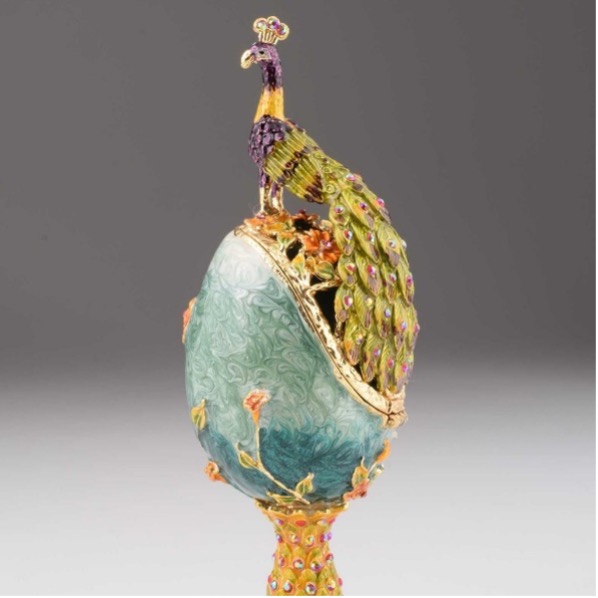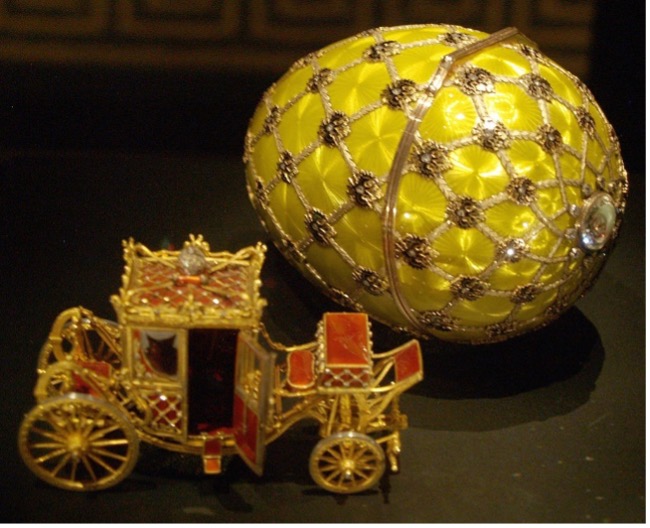The Fabergé Egg: An Easter Delight
There is no better way to celebrate this coming easter weekend by talking about one of the most extravagant and beautiful creations to grace the designer world – the Fabergé egg. With fabulous and grandiose designs on its exterior and bejewelled with the most expensive gemstones and metals, this decorative piece symbolises fun and outside-the-box creativity. If the chocolate egg isn’t your cup of tea, maybe a solid gold egg is more to your taste.

The Fabergé egg was created by jewellery firm House of Fabergé in Saint Petersburg within the Russian Empire. Around 69 of these eggs were created under the supervision of Peter Carl Fabergé between 1885 and 1917, with 52 known as ‘Imperial’ Eggs which were designed for the Russian Tsars Alexander III and Nicholas II for their wives and mothers.
The creation of the Fabergé egg originally stemmed from an idea thought up by Tsar Alexander III. In 1883 the Tsar gifted his wife a jewelled easter egg which contained a silver dagger and two skulls, with messages inside including ‘Christ has risen’ and ‘You may crush us–but we Nihilists shall rise again!’. In 1885, the Tsar’s brother suggested to Peter Carl Fabergé to create one of these bejewelled eggs, in which led to the creation of the first imperial egg, ‘the Hen Egg’. This design displayed an enamel shell and golden band, revealing a golden yolk on the inside which further opened to reveal a golden hen sitting atop a golden straw. If that was not enough, the golden hen opened to reveal a diamond replica of the imperial crown and a ruby pendant.
With the Tsar’s wife being thrilled by the beautiful egg, they commissioned Fabergé to create a new one every year with complete creative freedom – meaning more elaborate designs year after year. The only request the Tsar gave to Fabergé to follow was that each egg had to contain a surprise and be completely unique. After the Tsar’s death in 1894, the Imperial eggs created gained great fame and Fabergé was commissioned to make similar eggs for private clients. Following the nationalisation of Fabergé’s workshop in 1918, the trademark of his eggs have been sold on and picked up by various jewellers and egg-related merchandise has been created in the style of Fabergé.

One of the most famous Imperial eggs ever created was the Imperial Coronation Egg, with its creation to commemorate Tsarina, Empress Alexandra Fyodorovna. The egg adorns a translucent lime yellow enamel made from gold, which resembles the same gold robe worn by Tsarina at her coronation. It is trellised with gold laurel leaves mounted at each intersection by a gold imperial double headed eagle and set with a rose diamond on its chest. A large portrait diamond is set on the top of this egg with a surrounding cluster of ten brilliant diamonds. The surprise was a precise replica of the 18th century imperial coach inside a velvet-lined compartment, with the imperial crown in rose diamonds sat upon the coach surrounded by 6 double headed eagles.
Today, only 57 of these eggs have survived to the present day and remain in museums or privately held across the world. You can get your hand on replicas, or those eggs which are inspired by the famous Fabergé design, in jewellers or antique shops and display them proudly on the mantelpiece. Holding on to a wealth of history, these eggs remind us of the celebration of this season and add a little luxury to our usual traditions, putting the chocolate egg ever so slightly to shame.
By Victoria Fletcher

